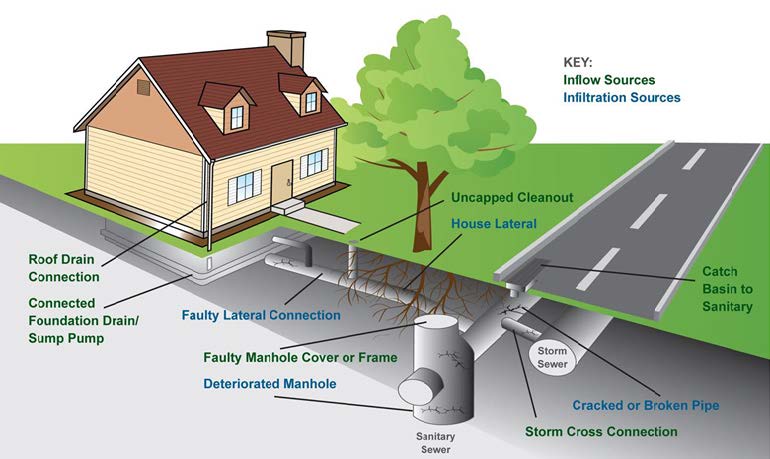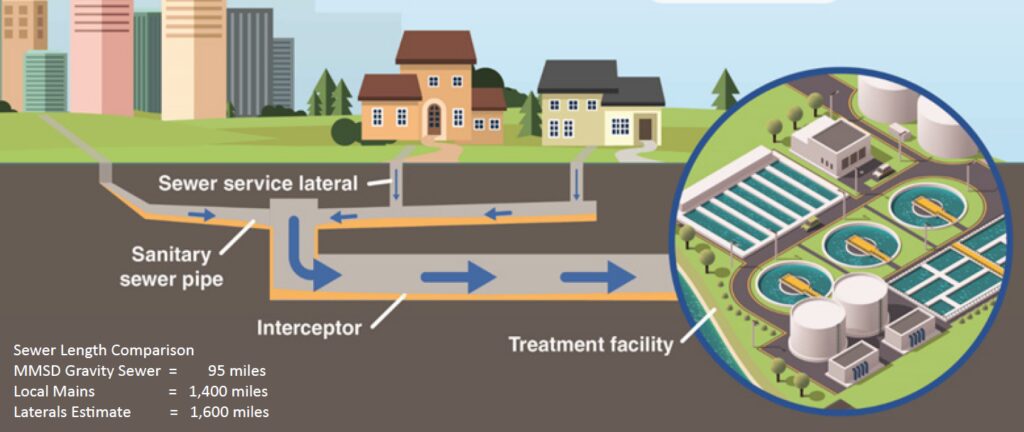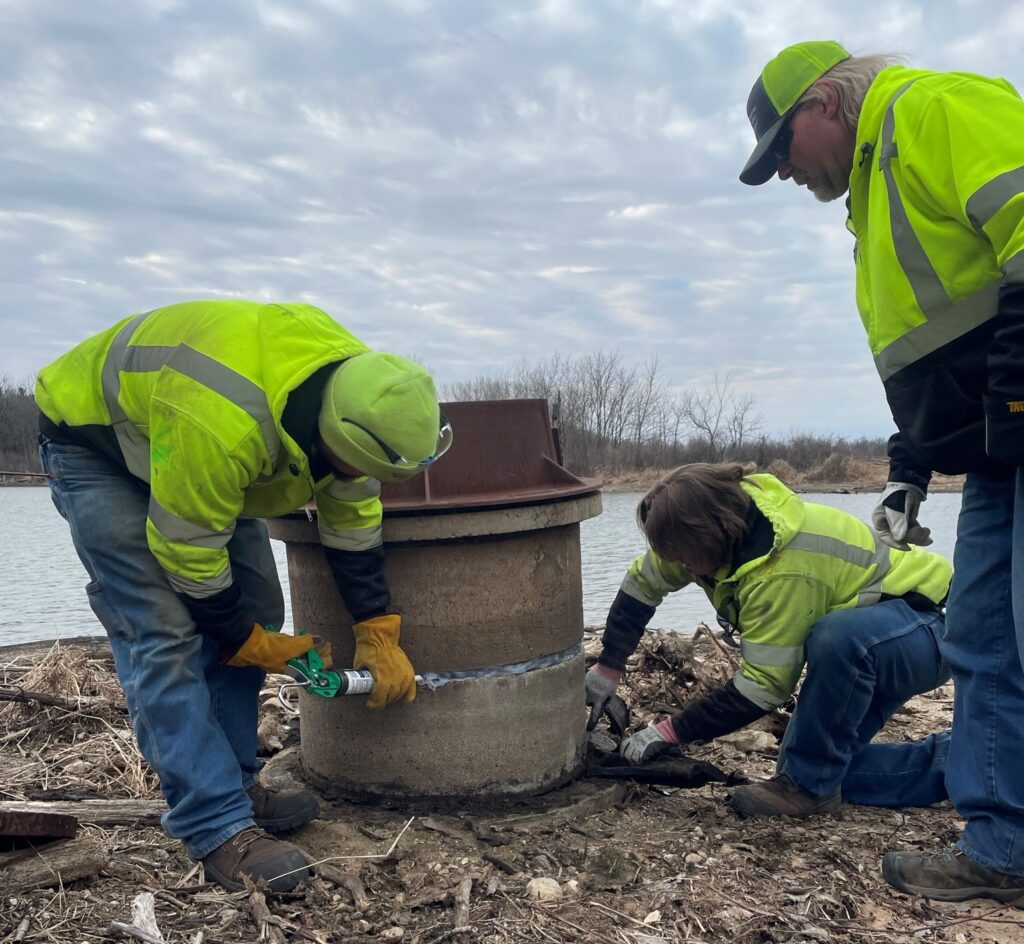The District’s collection system and treatment plant are not intended for stormwater – ours is a sanitary sewer system. Treating excess clear water at the plant is not environmentally or fiscally responsible. Concern about inflow and infiltration (I/I) has been growing in the past few years, especially when intense storm events test the capacity limits of the system and plant. Recent meetings with our owner communities identified this issue as a top priority, and we began the work of developing the Inflow and Infiltration Reduction Program.
By Jen Hurlebaus

What is I/I?
Inflow and infiltration describe excess clear water from groundwater and stormwater sources that flow into the sanitary sewer system through various defects or connections.
Why don’t we want I/I in the sewers?
Our collection system and treatment plant both have capacity limitations. Inflow and infiltration, especially during significant storm events, can overload the system and cause sewer backups into homes and buildings or sewer overflows into rivers or lakes.
Who is impacted by I/I?
We all are because we all rely on and are responsible for maintaining our sanitary sewer systems. Property owners are responsible for the lateral from homes out to the local main. Our owner communities take care of the local sanitary sewer mains, and the District owns and maintains the interceptor sewers that convey our owner communities’ wastewater to the treatment plant. If I/I fills up the sewer pipes, it can cause basement backups or sewer overflows.
When is it most problematic and where?
I/I can impact our system under various conditions, but usually, the most problematic I/I conditions are when stormwater flooding occurs during a large rainfall event. The stormwater will find its way into the sanitary sewer through cracks or holes in manhole covers. Or, if the cover was moved out of place, you now have a two-foot diameter “drain” directly into the sanitary sewer, similar to draining your bathtub.
Why is it such a hard problem to fix?

There are many potential ways I/I can get into the sanitary system. It’s likely occurring to some extent everywhere in the system. The District has 95 miles of gravity sewer, which is only 3% of the total length of sanitary pipes in the service area. When looking at reducing I/I to the treatment plant, we have to look at the entire collection system, which includes the local mains and private laterals. So, the involvement of our owner communities is key to overall I/I reduction.
The District and our owner communities have been working on reducing I/I in the public sanitary sewers, but it’s only a portion of the entire network of pipes. It’s estimated that over 50% of I/I is from private property. Most property owners don’t think about their sanitary sewer laterals until there is a major problem that causes a basement backup. The most effective I/I reduction projects have addressed I/I sources from public sewers and private property laterals.
Where to start? Which solution will provide the most reduction?

These are not easy questions to answer. And, with the large network of pipes, reducing I/I is never going to be a one-and-done type of project. That’s why we are working on establishing a long-term program for I/I reduction. The work, in some ways, will never be done because it’s about maintaining the sanitary sewer system to an established level of service.
No one solution fixes all I/I problems. Grouting may be used to stop a leak around a lateral connection at a manhole or leaking joints in pipes. Cured-in-place lining can rehabilitate a sewer pipe or a lateral. Open pick hole manhole covers need to be replaced with solid covers. These are just a few examples of solutions to various I/I sources. First, we have to identify the areas contributing the most I/I and then start investigating them to understand which sources are causing the I/I and what is the best solution to fix the problem.
What’s next for the Inflow and INFILTRATION REDUCTION PROGRAM?
The next phase of our implementation work will focus on understanding how much of a problem we have and how much it will cost. This evaluation will be completed using the District’s collection system hydraulic model, which was updated and calibrated in 2021. The model will also provide insights into which areas of the system are contributing more I/I compared to other areas.






